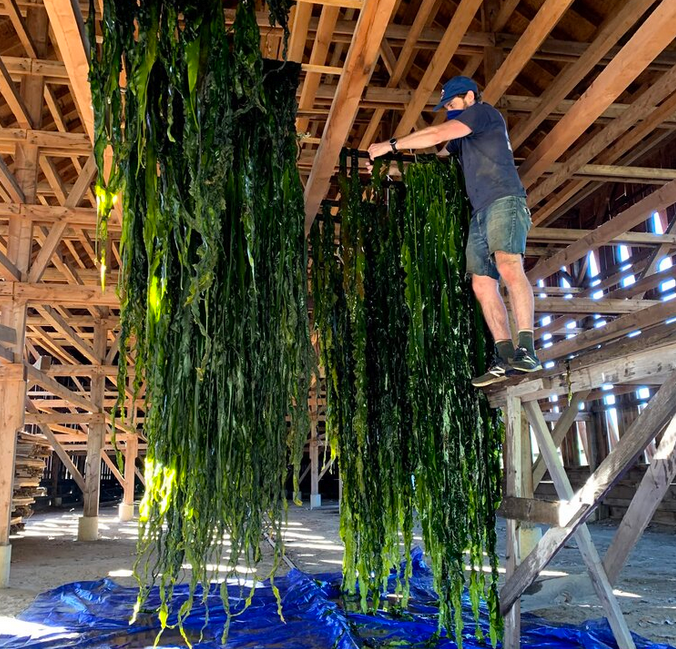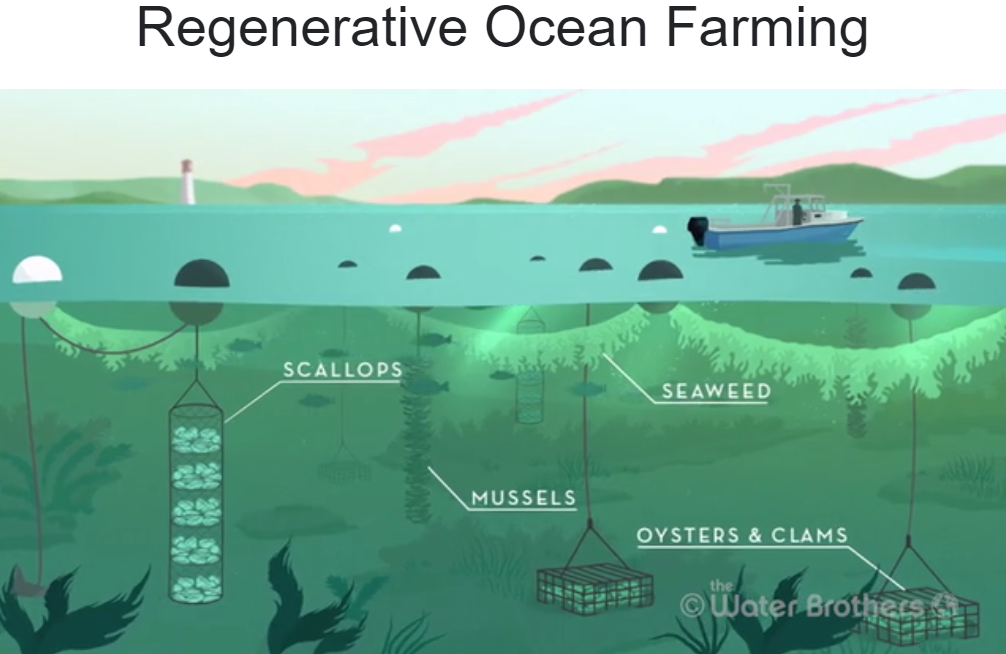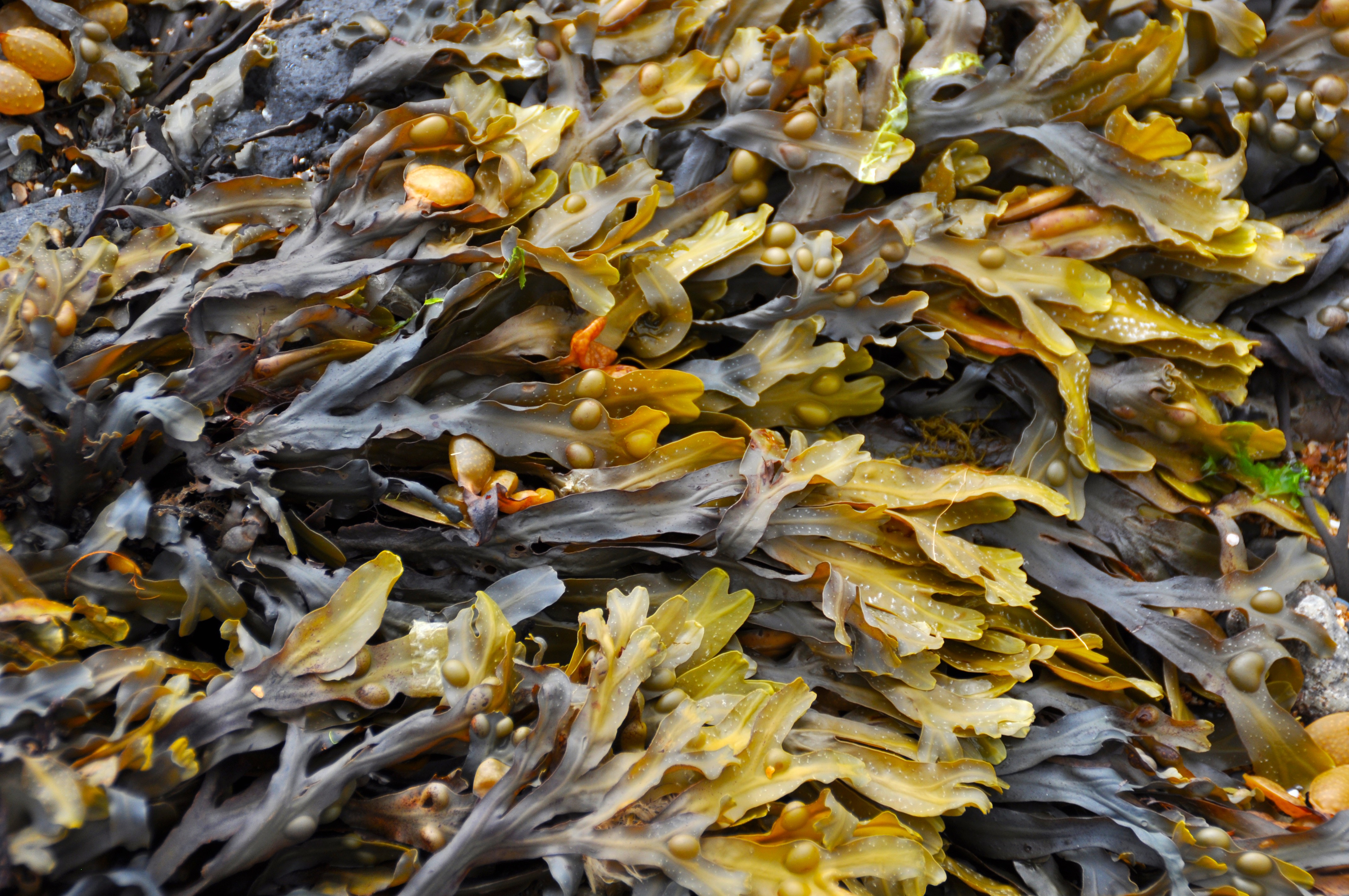
Image courtesy of GreenWave
Kelp farmers in New England have begun leasing barns from tobacco farmers during the tobacco off-season to dry harvested kelp from sustainable, zero-input, regenerative ocean farms.
The dried product then goes on to Lolliware to manufacture seaweed-derived single use plastic alternatives.
The whole growing industry of regenerative ocean farming is fascinating.
Take this image, courtesy of the Water Brothers

The goal is in essence to create an integrated ecosystem within a small space of the ocean: your farm.
Practicing polyculture in this way brings about many benefits; resilience and vigorous crop growth being among them.
This type of aquaculture is called regenerative because the species grown; kelp, seaweeds and shellfish, remove excess nutrients from the water by their feeding and growth.
Mussels, scallops, oysters & clams are filter feeders, which effectively improve the quality of the water they live in simply by existing within it.
Kelp species, like all plants, require carbon dioxide as a raw input to photosynthesis in order to grow and build their tissues.
From Wikipedia:
Seaweed Farming
Nothing on earth sequesters carbon faster than Macrocystis pyrifera (giant kelp) which can grow as much as 50 cm per day in ideal conditions
According to one study, covering 9% of the world’s oceans with kelp forest could:
“...produce sufficient biomethane to replace all of today’s needs in fossil fuel energy, while removing 53 billion tons of CO2 per year from the atmosphere, restoring [it] to pre-industrial levels”
The growing kelp also draws and fixes nitrogen and removes phosphorus from the surrounding ocean waters.
Ecologically harmful levels of nitrogen and phosphorus compounds in ocean waters come from agricultural, industrial and urban runoff (storm & wash water effluents), high-density aquaculture operations (intensive seacage farming of finfish, for example), wastewater treatment plant outflows and other activities attributable to human individuals and humanity as a whole.
We know the sea is being abused quite a bit.
Regenerative ocean farming as an industry is growing around the globe, thankfully. It offers some hope for the future of our ocean, and is being lead by this non-profit GreenWave as far as I can see.
This growth shows that the industry is profitable and accessible to an entire industry of fishing and boating folk around the world - and anyone else that might be interested.
In fact, just in researching this article I came across a website running out of the UK where it looks as though you can sign up to be a seaweed farmer.
You can either invest in a farm that is then operated and managed by the farmers, or you can buy a seaweed farm outright and run it yourself with their help.
They're taking email addresses for 2021. Just around the corner if you're looking for a change!
Have a look for yourself:
Start a UK Seaweed Farm

Image courtesy of Ronile via Pixabay
<コ:彡
A wild Fairy Shrimp has appeared!
Congratulations @aliquid! You have completed the following achievement on the Hive blockchain and have been rewarded with new badge(s) :
You can view your badges on your board And compare to others on the Ranking
If you no longer want to receive notifications, reply to this comment with the word
STOPDo not miss the last post from @hivebuzz: